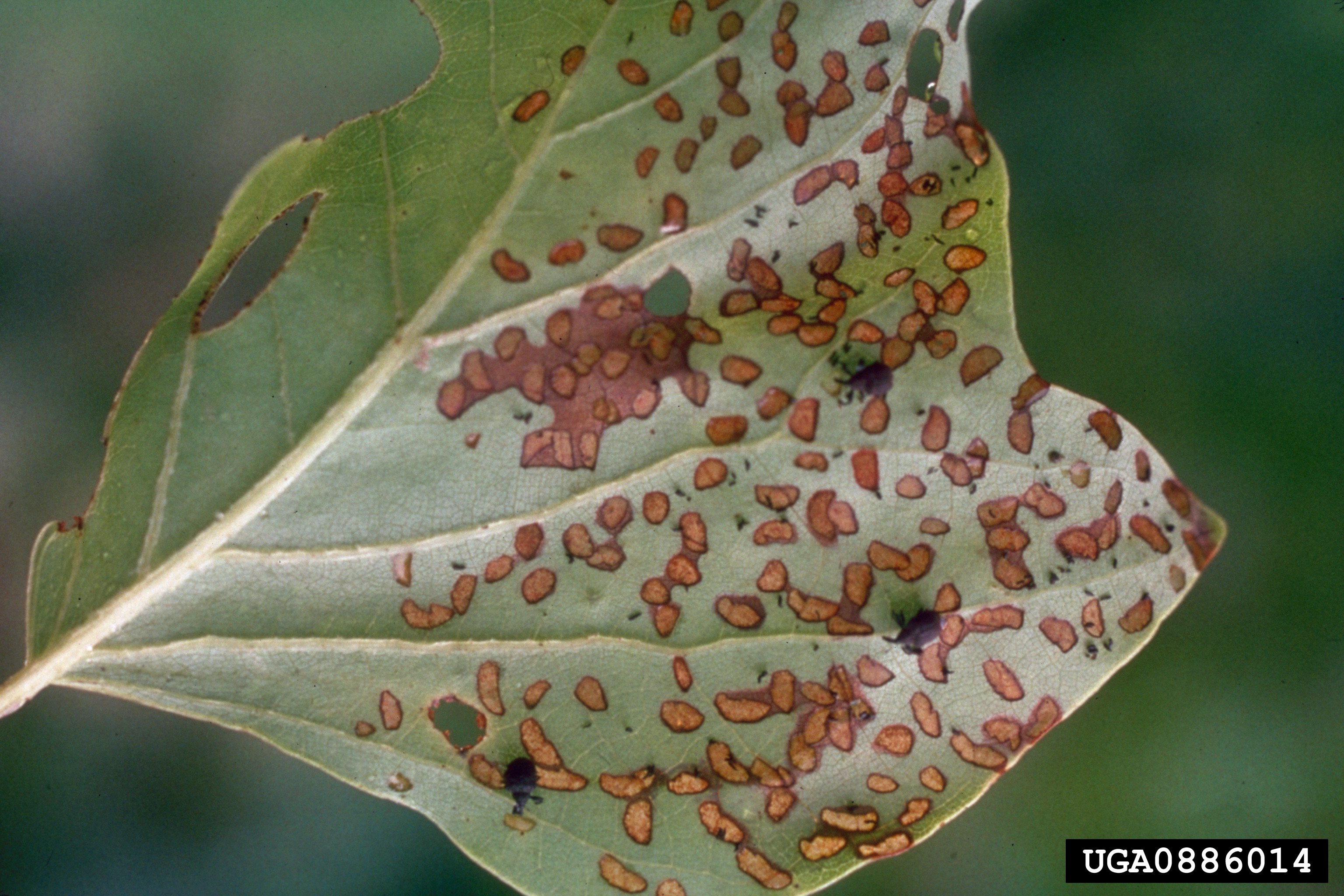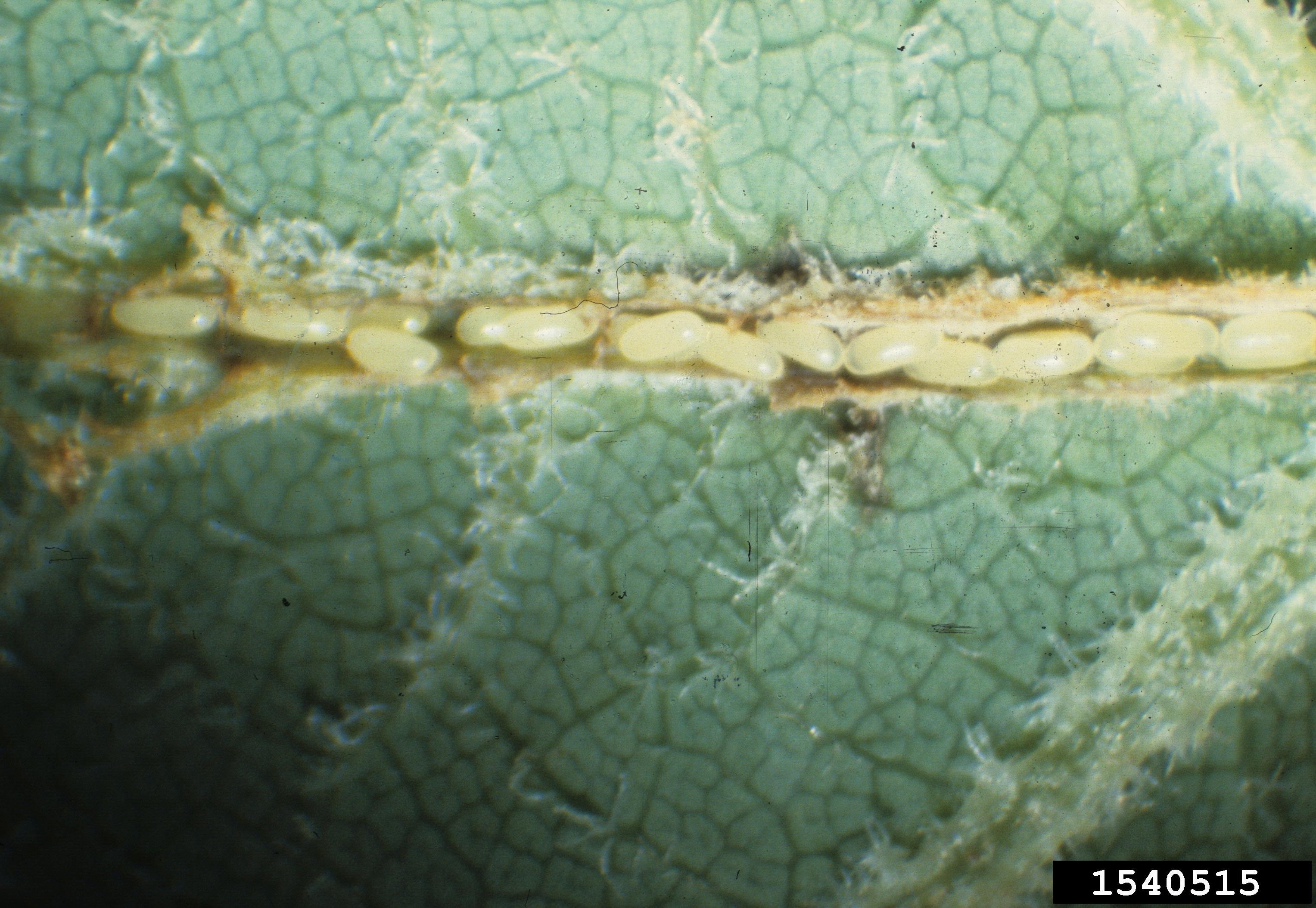Yellow Poplar Weevil
ENTFACT-414: Yellow Poplar Weevil | Download PDF
by Lee Townsend, Extension Entomologist
University of Kentucky College of Agriculture
Yellow poplar weevils, also known as sassafras or magnolia weevils, are small black snout beetles that damage yellow poplar, sassafras, and magnolia. Adults chew distinctive holes in the leaves that resemble curved rice grains in size and shape. The larval stage, a white legless grub, develops and feeds inside the leaves of poplar and sassafras. The combined activity of adults and larvae can cause significant leaf loss. While injured leaves cause the trees to be unsightly, damage to established trees probably does not affect its overall health.
 Yellow Poplar Weevil Damage (photo by Tim Tigner, Virginia Department of Forestry, Bugwood.org)
Yellow Poplar Weevil Damage (photo by Tim Tigner, Virginia Department of Forestry, Bugwood.org)
Biology
There is one generation of this insect each year. Adults pass the winter in leaf litter. They become active and start to feed on warm days in late April and early May. Before bud break, the weevils attack the swelling buds leaving their distinctive feeding marks. As the leaves unfold and enlarge, they, too, are fed upon. Holes in the leaves, about 1/8" in diameter, result from adult weevils puncturing the buds or feeding on the lower surface of the leaves.
Mating and egg laying occurs in May and early June. The eggs are placed in the midrib on the underside of the leaves. This injury can break the leaf midrib. Newly-hatched larvae move from the midrib into the leaf where they feed as leaf miners. The mined portion of the leaf turns brown and takes on a scorched appearance. When ready to pupate, the larvae move to an inflated portion of the mine and spin a spherical silk cocoon. Duration of the different life stages varies with environmental conditions.
 Yellow Poplar Weevil Larvae (photo by Lacy L. Hyche, Auburn University, Bugwood.org)
Yellow Poplar Weevil Larvae (photo by Lacy L. Hyche, Auburn University, Bugwood.org)
New adults begin to emerge from leaves during the second week of June and feed on the foliage. Sometimes they chew through the leaves, but more often they remove only the lower epidermis and mesophyl, leaving the upper epidermis intact. This produces many chlorotic spots and results in the scorched appearance of severely attacked trees. Feeding by the newly emerged weevils can be severe. Leaf drop occurs when damaged trees are also under drought stress. By mid-July the adults have disappeared to their hiding places in leaf litter and will remain inactive until spring.
Control
Insecticides such as acephate (Orthene) or carbaryl (Sevin) may be used to reduce damage to the foliage. Treat when feeding damage is seen on about 10% of the branches and repeat as necessary. Weevils arrive at trees over an extended period; treating at the very first sign of damage may be premature and require an additional application in a few days. While the damage may be unsightly, the injury to large, established trees in landscapes or wooded areas probably will not harm the tree.
Revised: 1/94
CAUTION! Pesticide recommendations in this publication are registered for use in Kentucky, USA ONLY! The use of some products may not be legal in your state or country. Please check with your local county agent or regulatory official before using any pesticide mentioned in this publication.
Of course, ALWAYS READ AND FOLLOW LABEL DIRECTIONS FOR SAFE USE OF ANY PESTICIDE!
Images: University of Kentucky Entomology unless otherwise indicated.
